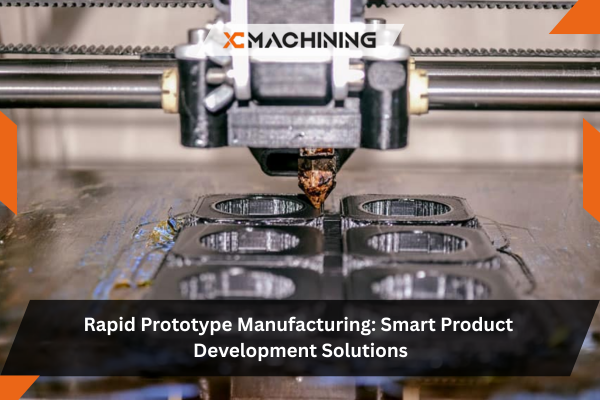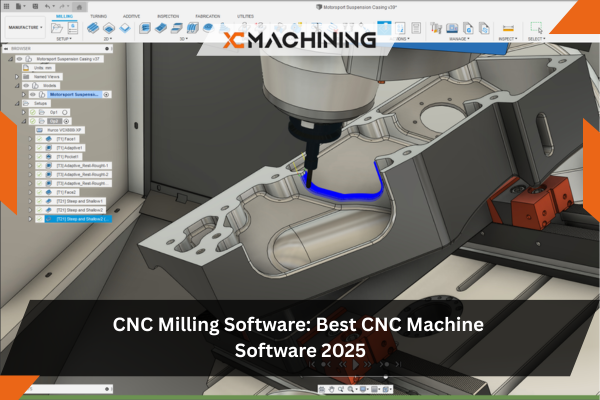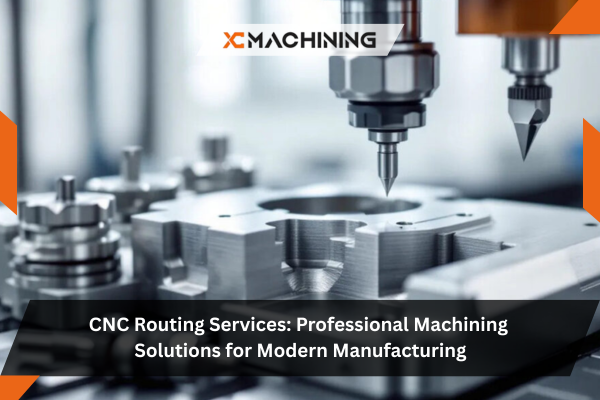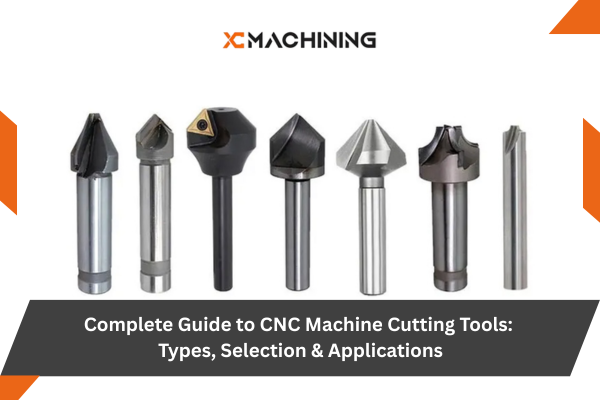Introducción
Turning a product idea into reality starts with one critical step—getting a working prototype made. Companies that master rapid prototyping beat competitors to market while others waste months in development limbo.
Prototype manufacturing bridges the gap between concept and production. A functional prototype reveals what CAD models hide. Engineers test performance. Investors see proof of concept. Users provide feedback that shapes final production.
This guide walks through technologies, processes, and strategies that successful product development teams use. Whether building a first prototype or refining designs for manufacturing, understanding these fundamentals separates products that succeed from those that fail.
What is Prototype Manufacturing?
Prototype manufacturing creates physical versions of product designs before mass production begins. Think of it as building a test version—something tangible that proves a concept works.
Real Example: A medical device startup had CAD files for a surgical tool. Beautiful on screen, but would surgeons actually use it? Prototype manufacturing services delivered a working model in five days. Doctors tested it during procedures, found the grip angle wrong, and suggested changes. The team refined the design, built another prototype, and validated improvements—all before spending $80,000 on production tooling.
Engineers use prototypes to answer questions CAD can’t:
- Does this mechanism actually work under load?
- Can users operate it comfortably?
- Will factories manufacture it affordably?
- Does it meet safety standards and regulations?
The prototyping process typically involves 2-4 iterations. First prototypes test basic concepts. Later versions validate final production specifications. Each cycle costs hundreds or thousands—far less than discovering problems during mass production where fixes cost tens of thousands.
About XC Machining: ISO 9001:2015 certified with AS9100 aerospace approval. Our manufacturing company has delivered 18,000+ prototypes since 2008, serving aerospace, medical, automotive, and industrial clients across 40 countries.
Core Prototype Manufacturing Technologies
Different advanced manufacturing methods suit different project needs. Choosing correctly affects timeline, cost, and prototype quality.
CNC Machining for Precision Prototypes
Computer-controlled mills and lathes carve metal parts and plastic parts from solid blocks. This subtractive manufacturing process delivers production-quality components with tight tolerances.
When our clients use CNC: Aerospace brackets needing ±0.0003″ accuracy. Medical implants requiring biocompatible titanium. Automotive parts that must survive stress testing at 200°F.
A robotics company needed aluminum housings tested under vibration. CNC machining delivered parts in 6061-T6 aluminum—the exact material for final production. Testing revealed mounting holes needed repositioning. We adjusted the design and delivered revised prototypes within three days. Total prototyping cost: $2,400. Cost avoided by catching the problem early: $35,000 in tooling rework.
Materials available: Aluminum 6061/7075, stainless steel 304/316, titanium Grade 5, brass, copper, ABS, polycarbonate, PEEK, acetal
Lead time: 4-6 days standard, 2-3 days expedited

3D Printing Services for Complex Geometries
Layer-by-layer additive manufacturing builds shapes impossible with traditional methods. Three technologies dominate rapid prototyping services.
FDM (modelado por deposición fundida) melts thermoplastic filament to build parts economically. Works well for concept models and fit testing. A consumer electronics company used FDM to test 12 enclosure variations before settling on final geometry. Total cost: $800 across all iterations.
SLA (estereolitografía) uses UV lasers to cure liquid resin into smooth, detailed parts. Perfect for visual prototypes and casting patterns. Jewelry designers and dental labs rely on SLA for precision work.
SLS (Sinterización selectiva por láser) fuses nylon powder without support structures. Strong functional prototypes handle real-world testing. Industrial equipment manufacturers test moving assemblies under load using SLS parts.
Real case: An IoT device startup needed 20 units for beta testing. 3D printing services delivered enclosures in five days at $35 per unit. Traditional injection molding would have required $8,000 tooling for a single design—risky before user feedback validated the concept.
Prototype PCB Manufacturing Services
Electronic products need circuits tested before committing to production quantities. Modern prototype PCB manufacturing delivers boards in 24-72 hours.
Services like JLCPCB and PCBWay revolutionized electronic prototype manufacturing with automated quoting and fast fabrication. Upload Gerber files Monday, receive bare boards Thursday. Add assembly services and fully populated boards arrive ready for functional testing.
Process breakdown:
- Design circuits using KiCad, Altium, or Eagle CAD software
- Export Gerber files and drill data
- Upload to manufacturer’s website (automated DFM checking)
- Receive bare PCBs in 2-3 days
- Populate components (in-house or assembly service)
- Test, debug, iterate
A wearable tech company went through four PCB iterations over six weeks, spending $600 total on prototyping. Each revision fixed power consumption issues and improved sensor accuracy. When they finally scaled to production, the design worked flawlessly.
Plastic Prototype Manufacturing
Consumer products, housings, and enclosures often use plastic. Multiple methods produce plastic prototypes depending on quantity and stage of product development.
Impresión 3D works for initial concept testing—quick and affordable but materials don’t exactly match production plastics.
Vacuum casting creates 10-50 identical parts from silicone molds. Polyurethane resins closely mimic production materials like ABS, polycarbonate, or rubber. We used this for a client’s smart home device—delivered 30 prototype housings in 12 days for investor demos and beta testing.
Rapid injection molding uses aluminum tooling instead of hardened steel. Produces 100-10,000 parts in actual production materials. Initial tooling costs $4,000-$15,000 but delivers production-representative parts for validation.
Many clients search “plastic prototype manufacturing near me” when they need face-to-face design reviews or faster local shipping. Our manufacturing services handle both local and nationwide clients with the same quality standards.
The Prototype Manufacturing Process
Smart teams follow structured steps rather than jumping into fabrication blindly.
Design Preparation Stage
Start with complete CAD models. Specify dimensions, tolerances, materials, and finishes clearly. Computer-aided design software like SolidWorks, Fusion 360, or AutoCAD creates the digital prototype.
Common mistake: One client submitted files with no tolerances marked. Their prototype arrived within standard machining tolerances (±0.005″) but their application needed ±0.001″. We remade parts once they provided proper specifications. Lesson: Define requirements upfront.
Apply design for manufacturability principles early. Sharp internal corners need radius. Thin walls may warp. Undercuts complicate fabrication. Our engineering and product development team provides free DFM analysis to catch issues before manufacturing starts.
Technology Selection
Match capabilities to requirements:
- Need production materials? Choose CNC machining or rapid injection molding
- Want complex internal channels? Use 3D printing services
- Testing electronics? Start with prototype PCB manufacturing
- Building metal sheet parts? Try laser cutting and bending
A furniture hardware company initially planned CNC machining for 50 brackets. We suggested sheet metal fabrication instead—same functionality at 60% lower cost. The prototyping process delivered parts in four days versus seven with machining.
Manufacturing Execution
Once orders are placed, our digital manufacturing systems route jobs to appropriate equipment. CNC machines run overnight. 3D printers build parts in batches. Quality inspectors verify first articles before completing runs.
Behind the scenes at XC Machining: CMM inspection verifies critical dimensions. Surface finish testing ensures specs are met. Every prototype ships with dimensional reports documenting actual measurements versus design intent.
Rush services push projects to front of queues. Standard manufacturing process timelines balance cost with reasonable delivery.
Testing and Iteration Phase
Receiving prototypes starts real learning. Dimensional checks verify accuracy. Functional testing reveals performance. User trials expose ergonomic issues.
An automotive supplier ordered transmission mount prototypes. First article testing showed deflection exceeded limits under load. We suggested changing from aluminum to steel and adding ribbing. Second iteration passed all tests. They moved to production confident the design worked.
Most products need 2-4 prototype cycles. Budget time and money accordingly. First prototypes test concepts. Second versions refine details. Third iterations validate final production specifications.
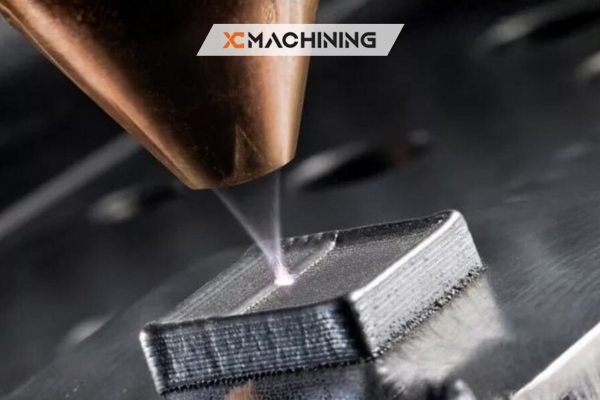
Choosing Manufacturing Services Wisely
Selecting the wrong manufacturing company wastes time and money. Smart
evaluation prevents problems.
Manufacturing Capabilities Assessment
Does the shop handle your materials? Can they hit your tolerances? Do they have capacity for your timeline?
Questions we ask clients:
- What’s your target production volume?
- Which regulatory requirements apply (FDA, aerospace, automotive)?
- Do you need material certifications?
- What’s your product development timeline?
A defense contractor needed ITAR-compliant fabrication for military components. Not all prototyping companies have proper certifications. We do, so they became long-term clients.
Communication Standards
Responsive manufacturers answer questions within hours, not days. They catch design issues before starting jobs. Updates arrive without constant follow-ups.
One client praised us: “XC’s engineering team spotted interference between two components our design firm missed. Saved us a full iteration cycle and two weeks.” – Tom Reynolds, Product Design Engineer, InnovateTech Solutions
Pricing Transparency
Hidden fees destroy budgets. Setup charges, material premiums, rush fees, shipping costs—understand everything before committing.
Our 2025 cost ranges for reference:
| Service Type | Single Part | 10 Parts | Best Application |
| FDM 3D Print | $60-$200 | $350-$1,200 | Form/fit testing |
| CNC Aluminum | $280-$1,100 | $1,600-$6,500 | Functional prototypes |
| PCB Assembly | $140-$700 | $750-$3,500 | Electronics validation |
| Fundición en vacío | $180-$550 | $1,400-$4,200 | Low-volume production |
Geography affects pricing. Local searches for “prototype manufacturing near me” find shops with faster delivery but potentially higher costs than national online services. Balance urgency against budget.
Quality Assurance Systems
Reputable manufacturing services inspect parts before shipping. CMM (Coordinate Measuring Machine) verification catches dimensional variations. First article inspections validate processes before full runs.
We maintain ISO 9001:2015 quality management systems. Every job follows documented procedures. Dimensional reports accompany shipments. Clients get traceability when regulatory requirements demand it.
Industry-Specific Applications
Different sectors have unique requirements shaping prototype approaches.
Aerospace demands: Certified materials (often titanium or aerospace aluminum), ±0.0005″ tolerances, full material traceability, AS9100 compliance. We machine components for drone manufacturers, satellite systems, and aircraft interior fittings.
Medical devices require: Biocompatible materials, FDA documentation support, cleanroom capabilities for certain applications, sterilization compatibility testing. Recent projects included surgical instrument prototypes and implantable device housings.
Consumer electronics need: Rapid iteration (weekly design changes common), prototype PCB manufacturing with quick-turn assembly, attractive surface finishes for investor demos, drop testing and thermal validation.
Automotive components face: Extreme testing conditions (temperature cycling, vibration, chemical exposure), production-representative materials for accurate validation, high-volume production transition planning.
Industrial equipment relies on: Heavy-duty materials (steel, cast iron for wear resistance), real-world operational testing, weldment prototypes for structures, hydraulic and pneumatic system validation.
Common Prototyping Mistakes
Learning from others’ errors prevents expensive lessons.
Skipping Design for Manufacturability Review
Beautiful CAD often can’t be manufactured affordably—or at all. Sharp corners cause tool problems. Thin walls warp. Extreme aspect ratios drive costs up.
Real example: A startup submitted designs for injection-molded housings. Wall thickness varied from 0.8mm to 4mm—guaranteed warping. Our DFM feedback suggested uniform 2mm walls with ribs for strength. The refine your prototype cycle added three days but prevented $12,000 in bad tooling.
Get expert eyes on designs before placing orders. Free DFM analysis from experienced manufacturing companies catches issues that design firms might miss.
Choosing Based on Price Alone
The cheapest quote often delivers late, poorly, or not at all. Balance cost against quality, capability, and reliability.
A client once shared: “We saved $800 using an overseas vendor. Prototypes arrived three weeks late with wrong materials. By the time we reordered properly, we’d missed our product launch window. That ‘savings’ cost us a $75,000 sales opportunity.”
Insufficient Testing
Rushing through validation means catching problems during mass production when fixes cost 10-100x more.
Create comprehensive test plans covering:
- Dimensional accuracy verification
- Functional performance under operating conditions
- Material property validation (strength, temperature resistance)
- Assembly fit and clearance checks
- User experience evaluation with actual target users
- Durability and cycle life testing
Underbudgeting Iterations
Expecting perfection from first prototypes sets unrealistic expectations. The purpose of your prototype is learning—learning costs money.
Budget recommendation: Allocate 50% of prototype budget to first iteration, 30% to second round, 20% for final refinements. This structure acknowledges reality while controlling costs.
Ignoring Production Scalability
Prototyping with methods that can’t scale to production creates false validation. If planning injection molding for production, eventually test with molded parts—not just 3D printed substitutes.
An industrial tool company developed prototypes entirely through 3D printing. Design worked great in nylon SLS material. When they finally injection molded in polypropylene (actual production material), the part cracked under load. Different materials behave differently. Late-stage prototypes should match production specifications.
Accelerating Product Development
Speed matters in competitive markets. Several strategies compress timelines without sacrificing quality.
Concurrent Engineering
Test multiple design variations simultaneously rather than sequentially. Order three different prototype configurations at once. Parallel testing saves weeks compared to serial iteration.
Digital Manufacturing Integration
Modern manufacturing capabilities include automated quoting, real-time production tracking, and digital file management. Upload designs at 8 PM, receive quotes by 9 AM, parts ship within days.
Rapid Tooling for Production Bridge
Aluminum tooling costs less than hardened steel molds but delivers thousands of parts. Use rapid tooling to start selling while final production tools are being built. One client generated $200,000 in early revenue using low-volume production from rapid tooling while waiting for full-scale production capability.
Transitioning Prototype to Production
Moving from prototypes to production parts requires planning and validation.
Production Readiness Assessment
Confirm designs are manufacturing-friendly at production volumes. Prototype processes that work for 10 units may fail at 10,000 units.
Key checks before scaling:
- Tolerances are achievable with production processes
- Materials are available at production quantities
- Cycle times support required production rates
- Assembly procedures are documented and repeatable
- Quality control processes are established
- Supply chain for components is secured
Pilot Runs
Bridge the gap with small production runs (100-1,000 units). These on-demand production batches validate processes before committing to expensive full-scale tooling.
A smart home device company ran 500-unit pilots. Discovered assembly taking twice as long as planned. Redesigned internal mounting tabs, ran another pilot, confirmed improvements. By the time they cut full production tools, assembly was optimized.
Manufacturing Partner Selection
Prototype shops often differ from production manufacturers. Evaluate production partners on:
- Volume production capacity
- Quality management systems (ISO certifications)
- Supply chain stability
- Geographic location (shipping, communication)
- Technical support and engineering collaboration
We guide clients through finding appropriate production partners when volumes exceed our manufacturing capabilities. Successful prototype to production transitions require planning from day one.
Principales conclusiones
→ Get a prototype made early to validate concepts before expensive production commitments
→ Match rapid prototype manufacturing methods to project requirements—materials, tolerances, quantities
→ Budget for 2-4 prototype iterations with 50% allocated to first round
→ Apply design for manufacturability principles to prevent costly manufacturing problems
→ Test prototypes thoroughly—dimensional, functional, user experience, durability
→ Choose manufacturing services based on capabilities and reliability, not just price
→ Plan prototype to production transitions from the beginning of product development
Conclusión
Effective prototype manufacturing transforms product ideas into market-ready solutions. Choosing appropriate technologies, working with capable partners, and testing thoroughly determines success. Companies investing strategically in rapid prototyping gain advantages through faster launches and better final products.
Ready to Build Prototypes?
XC Machining delivers precision rapid prototype manufacturing with advanced manufacturing capabilities. CNC machining, 3D printing services, sheet metal fabrication, and prototype PCB manufacturing serve aerospace, medical, automotive, and industrial sectors.
Our manufacturing services include:
- Same-day quoting with automated DFM analysis
- 4-6 day standard delivery, 2-3 day rush available
- ISO 9001:2015 and AS9100 certified processes
- Materials library: 50+ metals and plastics
- In-house quality inspection with CMM verification
Get instant quotes at https://xcmachining.com/ or call our engineering team to discuss your product development project.
“XC Machining delivered our titanium aerospace brackets with ±0.0003″ tolerances—exactly what our NASA testing required. Their technical team caught design issues we missed, saving us a full iteration cycle.” – Dr. Sarah Mitchell, Aerospace Engineer, SkyTech Innovations
Preguntas frecuentes
How long does rapid prototype manufacturing typically take? Standard lead times run 4-6 days for CNC machining and 2-4 days for 3D printing services. Rush manufacturing cuts timelines to 2-3 days with priority handling. Complex assemblies or specialized materials may need 7-10 days.
What’s the cost difference between prototyping and mass production? Prototype parts cost 10-50x more per unit than mass production due to setup, programming, and lack of volume economies. A CNC machined part costing $500 as a prototype might cost $15-30 in 10,000-unit production runs.
Can prototypes use the same materials as final production? Yes. CNC machining and rapid injection molding create prototypes from production-grade materials. This approach provides accurate testing data for mechanical properties, chemical resistance, and thermal performance—critical for validation.
Should I choose local prototype manufacturing services or online options? Local shops offer faster face-to-face communication and shipping but may cost 20-40% more. Online manufacturing services provide competitive pricing and broader capabilities. Choose based on project urgency, complexity, and whether hands-on design reviews add value.
How many prototype iterations do products typically need before production? Most products require 2-4 cycles. First prototypes test basic concepts and reveal major issues. Second versions refine details and validate improvements. Third iterations confirm final production specifications. Complex products like medical devices may need 5-8 rounds.
References
- Wohlers Associates. “Wohlers Report 2024: Additive Manufacturing Technology Trends.” https://wohlersassociates.com/product/wohlers-report-2024/ (2024)
- Society of Manufacturing Engineers. “Design for Manufacturability Best Practices in CNC Machining.” https://www.sme.org/technologies/articles/2024/dfm-cnc-best-practices/ (November 2024)
- IPC Association. “Quick-Turn PCB Manufacturing: 2025 Industry Standards and Lead Time Analysis.” https://www.ipc.org/pcb-quick-turn-standards-2025 (January 2025)
- NIST Manufacturing Extension Partnership. “Prototype to Production: Reducing Risk in Product Development.” https://www.nist.gov/mep/prototype-production-guide (December 2024)
U.S. Food and Drug Administration. “Medical Device Prototyping and Testing Requirements.” https://www.fda.gov/medical-devices/device-advice-comprehensive-regulatory-assistance/prototyping-medical-devices

